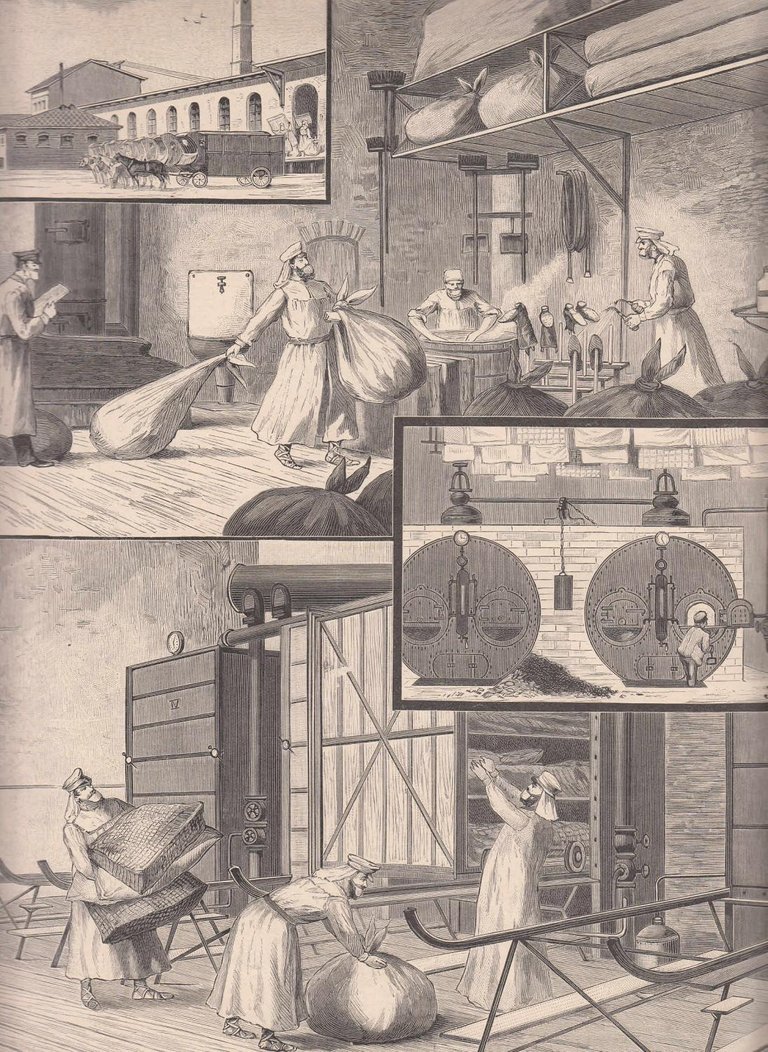
(Photo taken by me with Huawei P8 lite)
Most of the times I'm walking in Berlin I've got my head "up in the clouds" and I absently pass by so many interesting things. Sometimes I know them, sometimes I don't.
That's exactly what happened when I saw this "Desinfections Anstalt" in Kreuzberg.
What is it? What was it for?
It was builded up in Reichenberger Str. 66 and then extended to Ohlauer str 39/41.
It really looks like something set up during war, but of course I wanted to know a bit more.
Searching and searching, I've found some interesting information. First of all, this "Disinfecting Establishment" is not the only one in Berlin, actually there are 2 more (one in Schöneberg and the second one in Charlottenburg).
The word "Desinfections" sent a shiver down my spine. Disinfecting what?
These establishments were mainly used to disinfect patients' clothes, mattresses or bed linens. The huge walls were separating the infected area from the sanitized area, but these walls now don't exist anymore.
Main reason to build these places was the urgency to prevent or control diseases such as thyphoid, cholera, dysentery and diphtheria. Hygienical measures were needed in order to contain the huge spread of those illnesses.
Another purpose of this kind of building was to disinfect medical instruments or butcher tools.
In 1908 a total of 113 operators were working here, tying to mitigate the terrible effects of different diseases. However, normally it was barely used for those illnesses and were infact home for pest patients.
Unfortunately during WW the staff working in this Desinfektionsanstalt was reduced to half. An epidemic flu in 1918 led to the closure of over 300 schools in Berlin.
During peace period after war, the staff has been increased again but during 1927 another terrible peak of diseases carried out 39000 disinfections and 3100 voluntary operators were added to the staff.
During WWII the role of these buildings were recognized and their importance remained unquestioned, and in the 1940s arrived a rest period for the disinfection workers and used again during 1961 as DDR requested a disinfection.
How did they operate?
It was basically divided into 2 sides of a boiler, one clean and one dirty. It was of course forbidden to contaminate clean side with germs, and the designated operator called disinfector (DE: Desinfektor) were really careful about all hygienic measures to ensure this.
What has now remained?
Where once some of the most terrifying disease were fought, now you can find "Paul-Doormann- und der Niederlausitz-Grundschule".

(Ph. zvab.com)
What would you like to know about Berlin? Let me know! :)
Hi, was the building abandoned during its transition from disinfection place to its current shape as a school?
I personally like buildings that used to be abandoned and then turned back to live.
@sdl1987 I also like them and wanted to enter, but for what I know it's now a school and basically was never let abandoned in the years, as it always had a purpose.. I'll check how it is now if they let me enter and will keep it posted :)